I have a table of users, grouped into sessions. I would like to select an array for each user that consists of the number of tasks they have in each session:
var taskCounts =
from session in gzClasses.e_userLongSessions
orderby session.workerId ascending, session.startTime ascending
group session by session.workerId
into record
select record.Select(s => s.totalTasks).ToArray();
int[][] result = taskCounts.ToArray();
The above theoretically works, but it results in a separate SQL query for each user, as shown in the image below. Since the database is not local, this takes quite a long time. Is there a way to grab all the data in one query and reduce the overhead of running a bunch of individual queries?

At the same time, I'd like ensure that it's efficient by only transmitting the totalTasks integer values over the wire, instead of sending the entire database record.
Put another way, I'd like to grab a set of grouped integers from a remote database all in one query, and have them arranged into arrays in a C# program. It sounds pretty simple in principle, but I'm having a hard time getting LINQ to do this.